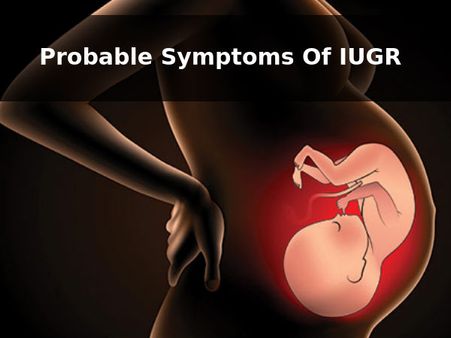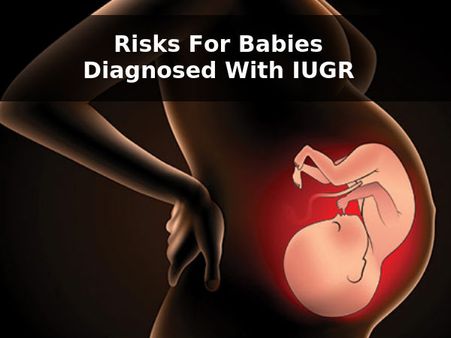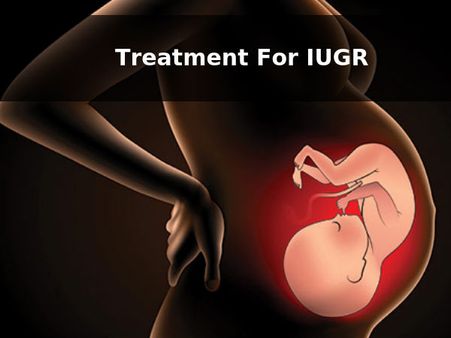Just In
- 56 min ago

- 4 hrs ago

- 8 hrs ago

- 9 hrs ago

Don't Miss
- Movies
 Entertainment LIVE Updates: Adil Hussain Reacts To Sandeep Reddy Vanga's Tweet;
Entertainment LIVE Updates: Adil Hussain Reacts To Sandeep Reddy Vanga's Tweet; - News
 Crowd Goes Crazy As Ajith Turns Up At Polling Booth To Vote
Crowd Goes Crazy As Ajith Turns Up At Polling Booth To Vote - Finance
 Rs 5/Share Dividend: Record Date In Due Course; Buy The Capital Goods Stock?
Rs 5/Share Dividend: Record Date In Due Course; Buy The Capital Goods Stock? - Automobiles
 Maruti Suzuki Swift Sees Price Hike Across Variants: New Model Launch In May 2024
Maruti Suzuki Swift Sees Price Hike Across Variants: New Model Launch In May 2024 - Sports
 LSG vs CSK IPL 2024: Who will Pick Maximum Wickets in Lucknow vs Chennai?
LSG vs CSK IPL 2024: Who will Pick Maximum Wickets in Lucknow vs Chennai? - Technology
 Nothing Phone 2 Receives NothingOS 2.5.5 Update with ChatGPT Integration and More
Nothing Phone 2 Receives NothingOS 2.5.5 Update with ChatGPT Integration and More - Education
 Karnataka SSLC Result 2024 Soon, Know How to Check Through Website, SMS and Digilocker
Karnataka SSLC Result 2024 Soon, Know How to Check Through Website, SMS and Digilocker - Travel
Telangana's Waterfall: A Serene Escape Into Nature's Marvels
Facts About Intrauterine Growth Restriction (Slow Foetal Growth)
Any woman would want to give birth to a healthy baby. But what if the growth of the foetus is slow? Read this!
Pregnancy is one of the crucial phases in the lifetime of a woman. Any woman would want to give birth to a healthy baby and for this several measures are taken. Eating organic foods that are toxin free, drinking lots of water, juices, taking ample amount of rest, and the list goes on.
The lifestyle itself changes for all the good that the mother can provide the baby with. But what if such measures are not taken? Improper nutrition can affect the growth of the baby in the womb, which is not supposed to happen to a developing embryo.

Consider the situation when the health of the mother is perfect and she can provide the essential nutrients to the baby. Can slow foetal growth occur in such a case? The answer is yes.

The problem is that in slow foetal growth only the cause of improper intake of food can be rectified, while other reasons have to be dealt with timely treatment. Read on to know about the facts of slow foetal growth, which is medically termed as Intrauterine Growth Restriction.

What Is Intrauterine Growth Restriction (IUGR)?
There are some medically set rules where a baby in the womb must measure so and so in order to be a healthy individual. In some cases, the weight appropriate for the time period is not achieved.
This results in IUGR, where the size of the baby is small for the gestational age. It is also referred to as Foetal Growth Restriction (FGR).

What Are The Types Of IUGR?
IUGR is basically of two types - symmetrical or primary and asymmetrical or secondary. Primary IUGR is a case where the body of the baby is in proportion with the internal organs but the weight of the baby falls below than what it must be for the gestational age.

In secondary IUGR, the size of the head and the brain seems to be correct for the age but the body seems to be smaller than required.

At Which Phase Of The Pregnancy Is It More Likely To Happen?
Generally speaking, IUGR can occur at any stage of the pregnancy - starting from the time of conception up to the third trimester.
The chances of a miscarriage are higher if it happens during the first trimester. Symmetrical IUGR can be detected at any stage of pregnancy, but the asymmetrical IUGR cannot be detected until the third trimester.

Probable Symptoms Of IUGR
The symptoms are just two and the problem is that it is not necessary that the symptoms can be seen in every case of IUGR.
The first symptom is that the carrying mother puts on the required weight as expected. The second symptom is related to the uterus where the size of it is small for the phase of pregnancy.

Reasons For IUGR
The reasons can be any of the ones among the following that are provided below.

Health of the mother, which includes poor diet, high blood pressure and infections transferred from the mother.
Health of the foetus - Foetus can be affected with problems like unhealthy umbilical cord, low level of amniotic fluid, and a problematic placenta where it does not function properly.
The improper lifestyle of the mother can also be a reason. This includes smoking, consumption of alcohol, intake of drugs, and exposure to chemicals.
Other factors are genetic and chromosomal abnormalities, unusual shape and size of the womb, and chronic illness.

Risks For Babies Diagnosed With IUGR
Babies
diagnosed
with
IUGR
can
put
them
at
risk
both
before
and
after
the
birth
and
in
some
cases,
the
problems
might
last
life
long.
Some
of
the
issues
that
can
happen
to
babies
are:
Low
birth
weight
Low
resistance
power
Low
blood
sugar
level
Fluctuating
body
temperature
Neurological
disability
Hypoxia
(lack
of
oxygen)
Increased
red
blood
cells
Stillbirth

Diagnosis Of IUGR
Most part of the diagnosis is done by taking an ultrasound scan. In a scan, measurements of the baby are taken. Measurements pertain to age, size, height, and weight of the baby. The level of amniotic fluid can also be measured this way.
Doppler flow is also a part of the ultrasound where the flow of blood in the baby is checked. If anything wrong is sensed with the measurements here, the doctors check for the possibilities of IUGR. The mother will be asked to undergo scans at regular intervals to ensure the safety of the baby.
Other tests include checking the weight of the mother, monitoring the baby's heartbeat, and lab testing the amniotic fluid for chromosomal issues.

Treatment For IUGR
There is no treatment as such that has been developed to treat IUGR. There are only ways to reduce the ill effects on the baby and the mother. The methods adopted mainly depend on the age of the foetus. Early labour is suggested if the gestational age is 34 weeks or more.
If the age is lesser than 34 weeks, regular monitoring is done for foetal well-being and then the baby is delivered through a C-section. For severe cases, where stunted growth is found, the C-section is done at 32 weeks and the baby is kept in the neonatal care where he/she can grow in a better way.
-
 yoga spiritualityEid Ul Fitr 2024: 50 Modern Muslim Baby Boy Names Born On Eid With Meaning
yoga spiritualityEid Ul Fitr 2024: 50 Modern Muslim Baby Boy Names Born On Eid With Meaning -
 healthIn China, Infant Is Born With Four-Inch Tail Growing from Its Buttocks, Know The Reason Behind This
healthIn China, Infant Is Born With Four-Inch Tail Growing from Its Buttocks, Know The Reason Behind This -
 fashionRaha Kapoor Twins With Mommy Alia Bhatt At Ambani Pre-Wedding Bash, 7 Tips To Match Outfits With Your Baby
fashionRaha Kapoor Twins With Mommy Alia Bhatt At Ambani Pre-Wedding Bash, 7 Tips To Match Outfits With Your Baby -
 beautyFrom Pigtails To Messy Curls, 7 Trendy Hairstyles Generated By AI For Your Little Fashionista
beautyFrom Pigtails To Messy Curls, 7 Trendy Hairstyles Generated By AI For Your Little Fashionista -
 healthExclusive: Doctor Shares How There Is Rise Of Muhurat Deliveries Aligned With Ram Mandir Consecration
healthExclusive: Doctor Shares How There Is Rise Of Muhurat Deliveries Aligned With Ram Mandir Consecration -
 fashionNew Born Baby Photoshoot Ideas Interpreted By AI, 7 Tips To Make This Cute Session Memorable
fashionNew Born Baby Photoshoot Ideas Interpreted By AI, 7 Tips To Make This Cute Session Memorable -
 fashionYear Ender 2023: Baby Clothing Trends That Will Dominate The Little One's Wardrobe In 2024
fashionYear Ender 2023: Baby Clothing Trends That Will Dominate The Little One's Wardrobe In 2024 -
 insync50 Lord Krishna Names For Baby Boy That Will Bless Your Child With Divine Qualities
insync50 Lord Krishna Names For Baby Boy That Will Bless Your Child With Divine Qualities -
 pregnancy parentingTwo Wombs, Four Hearts: US Mom's Extraordinary Double Uterus Pregnancy
pregnancy parentingTwo Wombs, Four Hearts: US Mom's Extraordinary Double Uterus Pregnancy -
 pregnancy parentingDelhi Air Pollution: Pregnant Women Must Follow These 4 Things!
pregnancy parentingDelhi Air Pollution: Pregnant Women Must Follow These 4 Things! -
 home n gardenHappy Birthday Raha Kapoor: From Customized Wall Art To Figurine Hooks, 8 Ideas To Decorate Your Baby's Room
home n gardenHappy Birthday Raha Kapoor: From Customized Wall Art To Figurine Hooks, 8 Ideas To Decorate Your Baby's Room -
 pregnancy parentingExpert Opinion On Breastfeeding: How It Will Help Baby And Mother
pregnancy parentingExpert Opinion On Breastfeeding: How It Will Help Baby And Mother


 Click it and Unblock the Notifications
Click it and Unblock the Notifications



